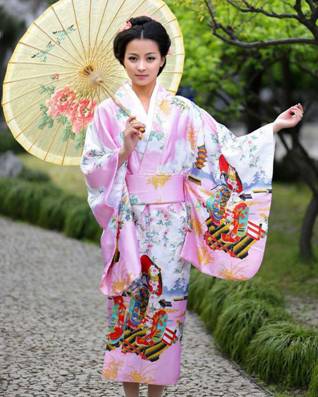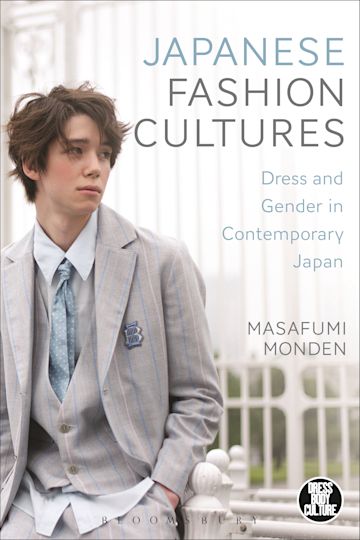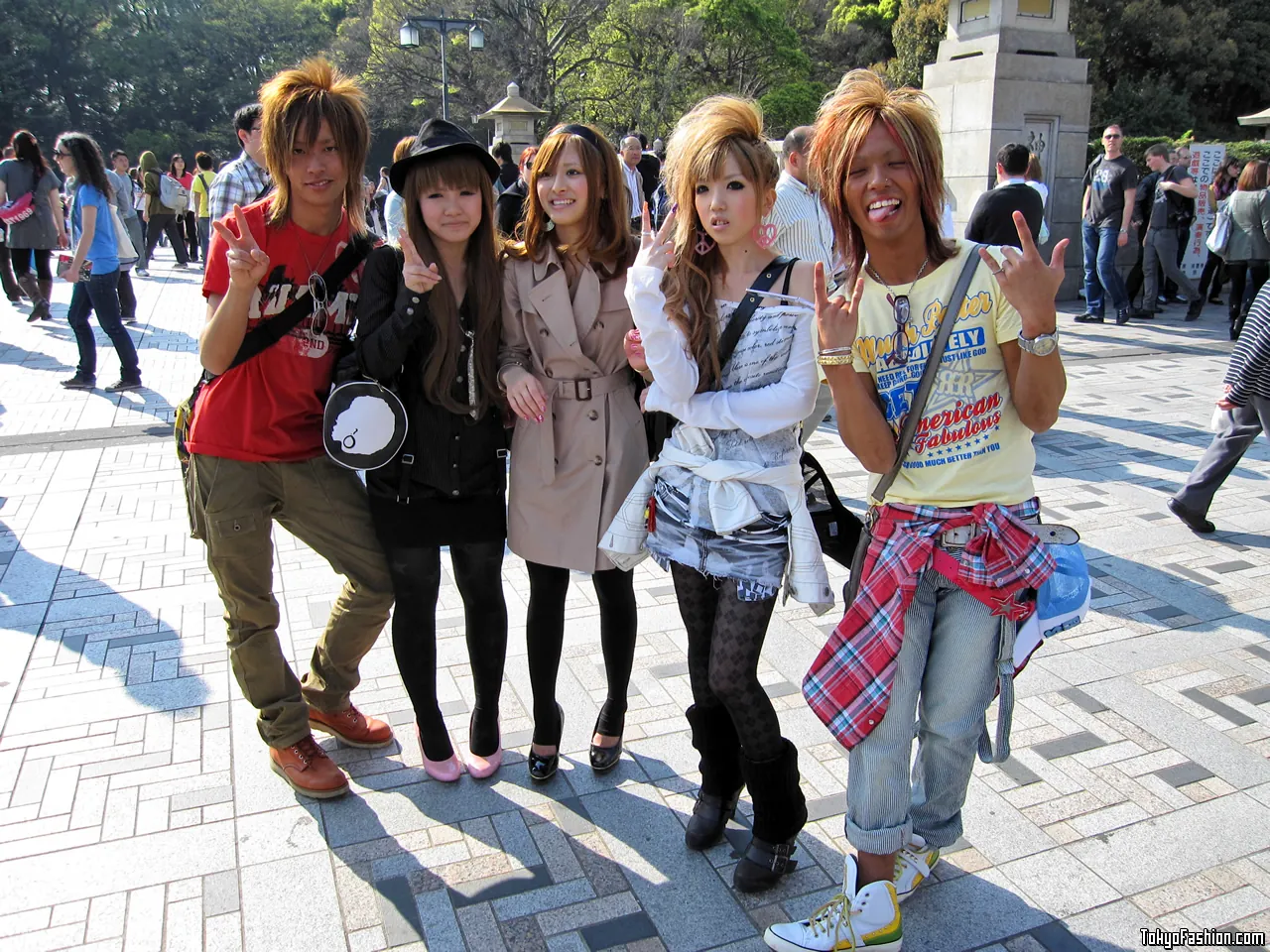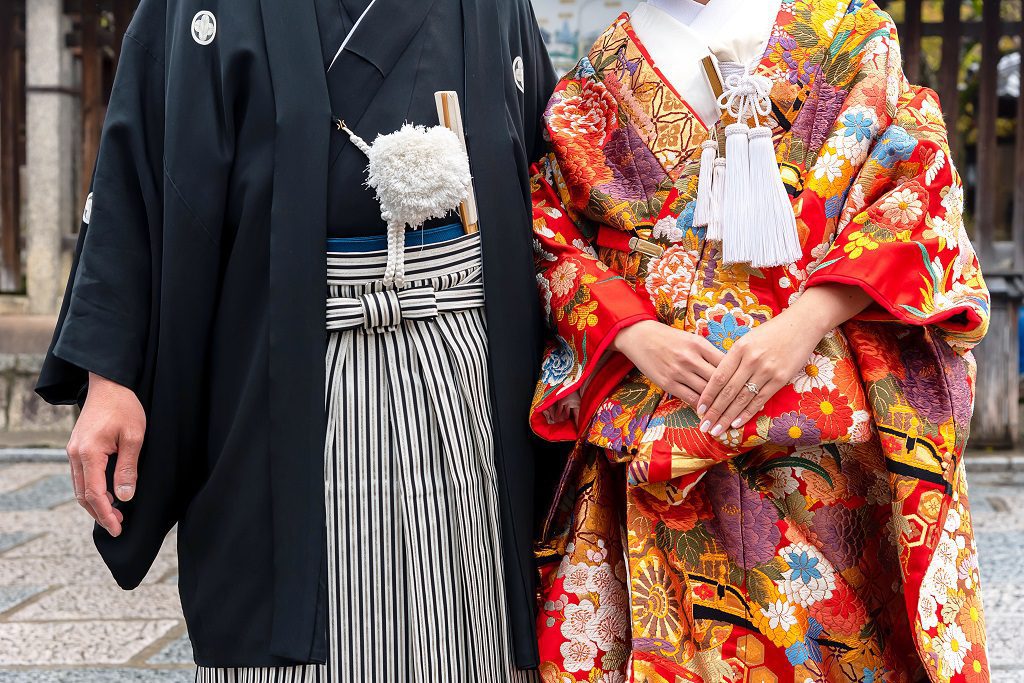Win a Free Trip to Japan!
Experience cherry blossoms and ancient temples
Japanese fashion and culture reflect a unique blend of tradition and modernity, shaped by historical influences and contemporary trends. Understanding the evolution of Japanese fashion requires examining key elements of traditional clothing, as well as the vibrant streetwear scene that plays a crucial role in today’s fashion landscape. As you delve into this guide, you will discover how colors, patterns, and cultural festivals enrich the narrative of Japanese fashion and culture, illustrating its significant impact not only locally but also on global fashion trends.
Historical Influences on Japanese Fashion
Japanese fashion and culture have evolved through centuries, shaped by various historical influences. Understanding these influences provides insight into the garments worn today and their cultural significance.
-
Ancient Period (Jomon to Heian)
- Utilized natural materials: hemp, silk, and cotton.
- Traditional garments like kimono emerged during the Heian period (794-1185).
-
Feudal Era (Kamakura to Edo)
- Clothing reflected social hierarchy.
- Samurai wore hakama; merchants favored elaborate textiles.
- Common folk wore simple, practical attire.
-
Meiji Restoration (1868)
- Opened Japan to Western influences.
- Adoption of Western-style clothing alongside traditional garments.
- Western suits became popular among the upper class.
-
Post-War Era (1945-1980)
- Rapid economic growth led to a diverse fashion scene.
- Young people embraced Western styles, giving rise to unique identities.
- Influences of American, European, and traditional elements became evident.
-
Contemporary Era (1980-Present)
- Vibrant street fashion emerged as a rebellion against norms.
- Designers like Issey Miyake and Rei Kawakubo fusioned elements of Japanese fashion and culture with avant-garde aesthetics.
- Globalization sparkled fashion trends influenced by Japanese culture, inspiring fashion weeks worldwide.
Japanese fashion and culture are a tapestry woven with threads of tradition, modernity, and external influences, showcasing a dynamic evolution that continues to captivate the world.

Key Elements of Traditional Japanese Clothing
Traditional Japanese clothing showcases a rich tapestry of history, craftsmanship, and cultural significance that truly embodies Japanese Fashion and Culture. Several key elements define these garments, revealing their beauty and versatility:
- Kimono: The quintessential piece of traditional clothing, the kimono features elaborate designs and is often made from silk. It is characterized by long sleeves and a wrap-around style, symbolizing grace and formality.
- Obi: A broad sash worn with kimonos, the obi comes in various widths and styles, enhancing the overall aesthetic. The way it is tied signifies cultural meanings and can vary between formal and casual occasions.
- Hakama: This pleated, skirt-like trousers are often worn over kimonos for ceremonial purposes. Traditionally favored by samurai, hakama carries a legacy of valor and honor.
- Geta and Zori: Footwear plays a crucial role in traditional attire. Geta, elevated wooden sandals, are perfect for outdoor events, while zori, flatter sandals made of rice straw or fabric, are suited for more formal occasions.
- Layering Techniques: The art of layering, or "juban" and "haneri", adds depth and complexity to traditional outfits. This technique showcases the wearer’s style while honoring the seasonal aesthetics of Japanese Fashion and Culture.
In summary, these elements not only highlight the elegance of traditional garments but also reflect the profound connection between Japan’s past and present fashion sensibilities. Understanding them helps appreciate the depth of Japanese Fashion and Culture.
Modern Japanese Fashion Trends
Modern Japanese fashion is a vibrant blend of tradition and innovation, reflecting the country’s rich history while embracing contemporary influences. Today’s trends in Japanese Fashion and Culture showcase a unique palette of styles, making Japan a global fashion powerhouse. Here are some key trends shaping modern Japanese fashion:
- Streetwear: One of the most prominent trends, streetwear combines casual wear with edgy designs. Influenced by hip-hop and skate culture, brands like A Bathing Ape (BAPE) and Comme des Garçons push boundaries with bold graphics and oversized silhouettes.
- Minimalism: In contrast, minimalist fashion champions simplicity and functionality. Labels such as Issey Miyake and Muji focus on clean lines and high-quality materials, appealing to those who appreciate understated elegance.
- Harajuku Culture: This eclectic style, characterized by vibrant colors and exaggerated silhouettes, emphasizes individuality. From Lolita fashion to Gyaru, Harajuku serves as a playground for self-expression.
- Techwear: Combining fashion with technology, techwear prioritizes practicality and durability. Brands like ACRONYM incorporate functional elements into their designs, offering clothing that’s both stylish and suitable for urban living.
- Sustainable Fashion: With increased environmental awareness, many designers are focusing on sustainability. Brands integrate eco-friendly materials and practices, earning recognition in Japanese Fashion and Culture.
In summary, these modern trends illustrate the dynamic nature of Japanese Fashion and Culture and its ability to evolve while honoring tradition.
The Role of Streetwear in Japanese Culture
Streetwear has significantly influenced Japanese Fashion and Culture, blending global styles with local traditions. Emerging from urban settings, this fashion genre reflects the unique aesthetic and values of Japanese youth. Here are some key aspects of streetwear’s role in Japan:
- Youth Identity: Streetwear provides a canvas for self-expression among the younger generation. It empowers individuals to showcase their personality through unique styles, combining elements from various cultures.
-
Creativity and Innovation: The constant evolution of streetwear fosters creativity:
- Japanese designers often incorporate traditional motifs, such as kanji or kimono patterns, while pushing modern designs.
- Brands like A Bathing Ape and Comme des Garçons emerge as leaders in this cultural transition.
- Subculture Formation: Various streetwear styles give rise to distinct subcultures, like Gyaru and Harajuku, which celebrate diversity in fashion and expression.
- Social Statement: Streetwear can serve as a form of protest or critique regarding societal norms, reflecting the concerns and aspirations of Japanese youth.
| Aspect | Traditional Fashion | Streetwear |
|---|---|---|
| Origin | Rooted in history and rituals | Emerged from urban environments |
| Purpose | Cultural identity and ceremony | Self-expression and individuality |
| Design Influence | Patterns, colors from nature | Global trends blended with local culture |
In summary, streetwear plays a crucial role in Japanese Fashion and Culture by merging tradition with modernity, influencing identity, and fostering community among Japan’s youth.

Cultural Significance of Colors and Patterns
Understanding Japanese Fashion and Culture requires delving into the rich symbolism behind colors and patterns. In Japan, colors do not only serve an aesthetic purpose; they carry deep meanings and are integral to cultural identity.
Color Symbolism
- Red: Associated with happiness, good fortune, and celebration. You often see red in traditional garments during joyful occasions.
- White: Represents purity and simplicity. In Japanese culture, white is commonly worn at funerals, contrasting its festive use in weddings.
- Black: Symbolizes elegance and formality. While it often conveys sophistication, in some contexts, it can also represent mourning.
- Blue: Reflects calmness and stability. Historically, indigo-dyed fabrics have been popular in traditional wear.
Pattern Significance
Patterns in Japanese clothing reveal stories, beliefs, and seasonal changes. Here are some key examples:
- Asanoha (Hemp Leaf): Symbolizes growth and resilience, commonly used among young people.
- Seigaiha (Blue Ocean Waves): Represents peace and good fortune, frequently found in textiles for celebrations.
- Kikkō (Tortoise Shell): Emphasizes longevity and good luck, often featured in wedding garments.
Through this lens, it becomes evident that Japanese Fashion and Culture intricately intertwine color and pattern, forming a visual language that communicates values and sentiments across generations.
Traditional Japanese Festivals and Fashion
Japanese festivals, or "matsuri," showcase the rich tapestry of Japanese fashion and culture through vibrant attire and age-old traditions. The connection between these festivals and traditional clothing reflects both regional heritage and seasonal celebrations. Here’s how festival fashion captures the essence of Japan:
- Kimono: This iconic garment remains the centerpiece of festival attire. Worn during special occasions, kimonos feature intricate patterns and colors that represent the season or the festival’s theme.
- Hakama: Traditionally worn by men and women during formal events, hakama trousers can complement the kimono, showcasing a blended style rooted in history.
- Yukata: A casual, summer version of the kimono, yukata is popular during outdoor festivals, promoting comfort while maintaining elegance. Lightweight cotton fabric makes it ideal for warm weather.
- Happi Coats: Often seen in local festivals, these short jackets display bold designs and the festival’s name. They enhance the sense of unity and community spirit among participants.
| Festival | Typical Attire | Key Color Elements |
|---|---|---|
| Gion Matsuri | Kimono, Yukata | Red and white for purity |
| Tanabata | Yukata | Blue and yellow for hope |
| Awa Odori | Happi, Yukata | Bright colors for joy |
In essence, traditional Japanese festivals are a mesmerizing blend of Japanese fashion and culture, celebrating both the beauty of clothing and the vibrant spirit of community and heritage.
Popular Fashion Districts in Japan
Exploring Japanese Fashion and Culture often leads to vibrant districts that embody the essence of the country’s style. Here are some of the most renowned fashion districts in Japan where tradition meets modernity:
-
Harajuku:
- Known for its eclectic street fashion.
- Youth culture thrives here, featuring both mainstream and avant-garde styles.
- Stores range from high-end boutiques to thrift shops, showcasing uniqueness.
-
Shibuya:
- A bustling hub plastered with vibrant billboards and trendy shops.
- Perfect for discovering the latest Japanese fashion trends.
- Hosts popular department stores like Shibuya 109, catering to fashion-savvy shoppers.
-
Ginza:
- Luxury meets tradition in this upscale district.
- Home to flagship stores of international brands alongside traditional Japanese fashion houses.
- Offers a sophisticated shopping experience, attracting both locals and tourists.
-
Akihabara:
- Although famous for electronics, it also caters to niche fashion subcultures.
- Stores specialize in anime and manga-inspired clothing, reflecting the unique aspect of Japanese Fashion and Culture.
-
Omotesando:
- Known for its architectural elegance and stylish boutiques.
- Residents and visitors explore high-end fashion brands nestled beside creative designer shops.
In conclusion, these districts not only highlight Japanese Fashion and Culture but also serve as inspiration for fashion enthusiasts worldwide. Venture into each area to experience the diverse trends that make Japanese fashion remarkably unique.

Impact of Japanese Fashion on Global Trends
Japanese Fashion and Culture have long been influential in the global fashion scene, merging tradition with innovation. As a result, Japan serves as a wellspring of inspiration for designers worldwide. Here are some key impacts of Japanese fashion on global trends:
- Street Style Influence: Japanese streetwear has revolutionized casual wear. Brands like A Bathing Ape (BAPE) and Comme des Garçons have set trends that resonate globally, emphasizing unique graphics and layering techniques.
- Avant-Garde Designs: Designers such as Issey Miyake and Yohji Yamamoto introduced avant-garde concepts, emphasizing shape and form over conventional beauty. Their works challenge garment construction, encouraging global designers to think outside the box.
- Cultural Aesthetics: The incorporation of traditional Japanese elements like kimono fabrics and patterns into contemporary fashion underscores the beauty of cross-cultural influences. This has led to a rise in collections inspired by Japanese textiles.
- Fashion Weeks and Exhibitions: International fashion events increasingly feature Japanese designers. For instance, Tokyo Fashion Week has gained recognition, showcasing the vibrancy of Japanese Fashion and Culture to a worldwide audience.
| Aspect | Japanese Influence | Global Impact |
|---|---|---|
| Streetwear | Casual yet stylish looks | Shift towards relaxed, artistic fashion |
| Avant-Garde Design | Experimental silhouettes | Broader acceptance of diverse aesthetics |
| Traditional Elements | Kimono and textile integration | Global appreciation for rich cultural heritage |
Overall, the impact of Japanese Fashion and Culture on global trends proves that it is not just a style but a dynamic dialogue between the past and present, shaping fashion narratives across the world.
Fashion Icons and Influencers in Japan
In the realm of Japanese Fashion and Culture, influential figures play a vital role in shaping trends and inspiring new generations. From traditional designers to modern streetwear influencers, these icons leave a substantial mark on both local and global fashion landscapes. Let’s explore some of the most notable fashion icons in Japan:
- Yohji Yamamoto: Renowned for his avant-garde style, Yamamoto blends traditional Japanese aesthetics with contemporary silhouettes. His work emphasizes the beauty of asymmetry and the interplay of fabrics.
- Issey Miyake: Famous for his innovative use of technology in fashion, particularly pleating techniques, Miyake’s collections celebrate both elegance and practicality. His designs often reflect a fusion of art and garment.
- Hiroshi Fujiwara: A pivotal figure in streetwear, Fujiwara is known as the “Godfather of Harajuku.” He successfully merges music, art, and fashion, making him a significant influencer in Japan’s urban culture.
- Kanye West: While not Japanese, West’s collaborations with local brands have sparked interest in Japanese Fashion and Culture, showcasing the global influence of Japanese streetwear.
Comparison Table of Influential Figures
| Icon | Style/Contribution | Impact on Japanese Fashion and Culture |
|---|---|---|
| Yohji Yamamoto | Avant-garde, asymmetrical designs | Elevated traditional aesthetics |
| Issey Miyake | Technological innovation in textiles | Promoted fusion of art and fashion |
| Hiroshi Fujiwara | Streetwear pioneer, cultural fusion | Influence on urban styling and subcultures |
These icons not only draw from the rich history of Japanese Fashion and Culture but also propel it into the future, blending old and new seamlessly. Understanding their contributions helps deepen our appreciation for the dynamic world of Japanese fashion.
Understanding the Balance of Tradition and Modernity
Japanese fashion and culture beautifully intertwine traditional values with modern influences, creating a unique style that captivates the world. This balance manifests in various forms, from clothing to lifestyle choices, demonstrating how Japan respects its heritage while embracing contemporary trends.
Key Aspects of this Balance:
- Cultural Fusion: Designers often blend classic elements like kimono fabrics with modern silhouettes. This creates garments that honor history while appealing to today’s fashion sensibilities.
- Street Style: Urban centers like Tokyo exhibit a dynamic blend of traditional garments and avant-garde streetwear. For instance, a casual outfit might feature sneakers paired with a yukata, showcasing a playful nod to the past.
- Fashion Events: Numerous fashion shows and exhibitions highlight this balance. Designers present collections that reflect Japanese culture through modern lenses, such as the Tokyo Fashion Week.
Comparison of Traditional vs. Modern Elements:
| Traditional Elements | Modern Adaptations |
|---|---|
| Kimono and Yukata | Kimono-inspired dresses and jackets |
| Tatami and Shoji Screens | Sleek, minimalist home décor |
| Handcrafted Textiles | Mass-produced, yet unique fabrics |
| Seasonal Festivals | Urban street festivals |
Understanding the intricate layers of Japanese fashion and culture reveals a deep respect for heritage while promoting a forward-thinking attitude. This harmonious existence of old and new continues to inspire fashion enthusiasts globally.
Frequently Asked Questions
What are the main styles of Japanese fashion?
Japanese fashion is known for its diversity and creativity, showcasing various styles that range from traditional garments like kimono to contemporary street fashion such as Harajuku and Gyaru. Some of the main styles include minimalist designs reflecting traditional aesthetics, avant-garde silhouettes, and subcultures that blend Western influences with Japanese elements. Each style often tells a unique story about the individual’s personality and cultural context, making Japanese fashion vibrant and multifaceted.
How has Japanese culture influenced the global fashion industry?
Japanese culture has significantly impacted the global fashion scene through its unique blend of traditional and modern aesthetics. Designers such as Issey Miyake and Yohji Yamamoto have introduced concepts that challenge conventional Western fashion norms. The usage of asymmetry, innovative fabric techniques, and a focus on craftsmanship are just a few elements that have seeped into global trends. Additionally, the distinct street styles originating from areas like Harajuku have inspired numerous fashion movements worldwide.
What traditional clothing should I know about in Japanese culture?
In Japanese culture, traditional clothing includes garments such as the kimono, yukata, and hakama. The kimono is a formal garment characterized by intricate designs and rich symbolism, often worn on special occasions. The yukata, a lighter cotton version of the kimono, is typically worn in summer festivals. Hakama are wider trousers that are traditionally worn over a kimono for ceremonial purposes. Each piece of clothing carries historical significance and reflects the artistry and craftsmanship of Japanese culture.
What are some popular fashion trends in Japan today?
Today, popular fashion trends in Japan continue to evolve, embracing both retro and futuristic aesthetics. Trends such as gender-neutral clothing, layering techniques, and the mix of high fashion with streetwear are prevalent. Influences from pop culture, anime, and even social media are significant in shaping styles. Additionally, sustainability is becoming a prominent focus, prompting designers to create eco-friendly collections that advocate for responsible consumption while maintaining the uniqueness of Japanese fashion.
How does Japanese fashion reflect its cultural values?
Japanese fashion often reflects deep cultural values such as respect for craftsmanship, minimalism, and the importance of individuality. The focus on quality over quantity parallels the cultural appreciation for art and dedication to craft. Minimalist designs with subtle colors symbolize harmony and balance, which are vital in Japanese culture. Furthermore, the vibrant street fashion often seen in urban areas showcases the youth’s desire for self-expression, thereby bridging traditional values with contemporary modes of identity.
